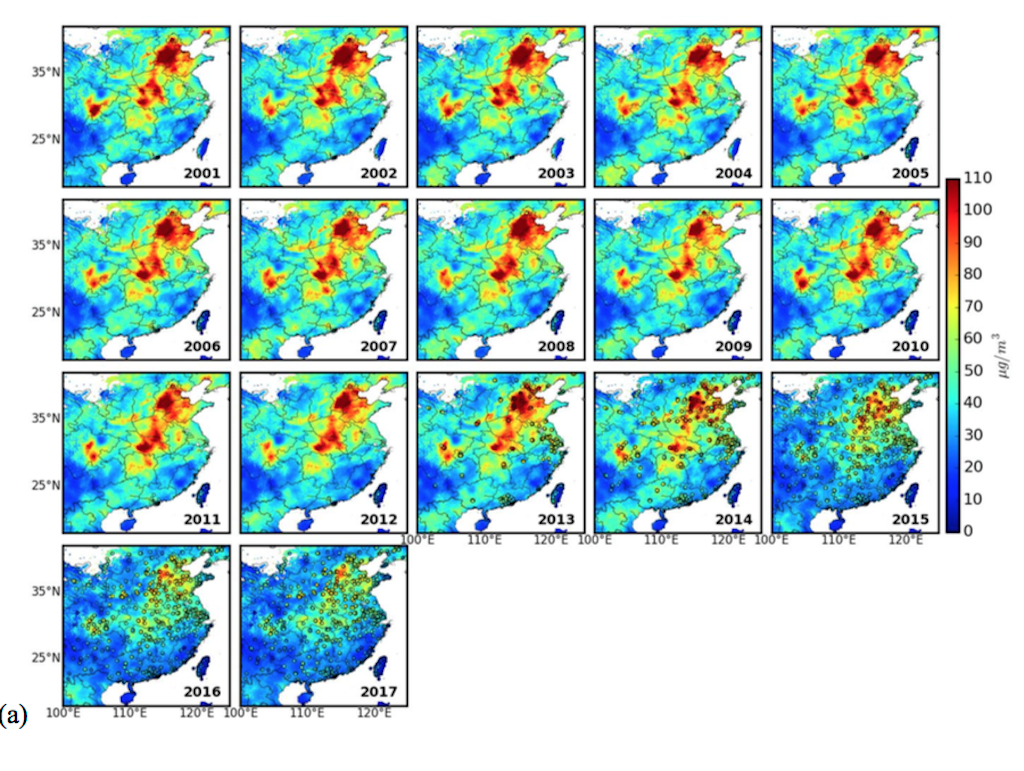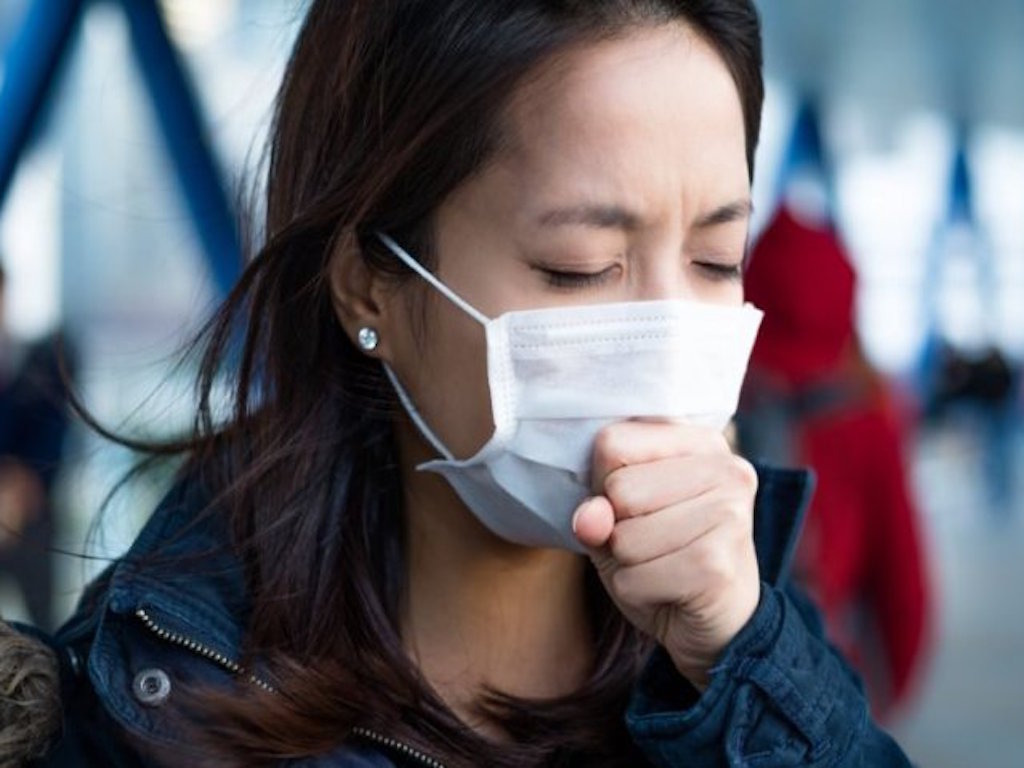8 Mins Read
Just how bad is the air pollution in Hong Kong? And what can be done about it? Here’s everything you need to know.
In 2019, the American Women’s Association (AWA) of Hong Kong hosted a panel talk on air pollution in the city at Explorium Hong Kong’s exciting space. The panel, which was moderated by Green Queen founder Sonalie Figueiras, was joined by key experts on the topic, including CEO of Clean Air Network (CAN) Patrick Fung, team leader at HKUST’s air pollution app PRAISE-HK Michelle Wong, Assistant Director of the EPD’s Air Policy Division David Ho, and president of the HK Institute of Allergy Dr Marco Ho. During the educative discussion, we learned a great deal about the impact, key misconceptions and advice regarding air pollution in Hong Kong. Below we share the key takeaways from this outstanding discussion on Hong Kong’s air pollution problem.

1) There are 6 main pollutants in Hong Kong
In Hong Kong, there are 6 main types of pollutants: sulphur dioxide, nitrogen oxides, carbon monoxide, ozone, PM10 and PM2.5 respirable fine particles, and hydrocarbons. According to David Ho, Assistant Director of the Air Policy Division under the government’s Environmental Protection Department (EPD), the main sources of these 6 main types of Hong Kong’s air pollutants are motor vehicles, marine vessels and power plants. On the street level, diesel vehicles – especially buses and trucks – are the main culprits for pollution.
2) Pollution is associated with serious & chronic health consequences
We learned a lot about the serious health implications of poor air quality, especially right here in Hong Kong. The CEO of the Clean Air Network (CAN), Patrick Fung, spoke about the list of studies finding alarming complications associated with air pollution in children, including adverse birth outcomes, infant mortality, neurodevelopment, child obesity and asthma – just to name a few.
This was corroborated by Dr Marco Ho, former deputy chief executive at Queen Mary Hospital and an allergen specialist in pediatric immunology and infectious diseases, who said that pollution “does affect the quality of life of eczema patients, who have to go for more hospital visits and suffer itchy skin” as well as vulnerable groups, such as those with preexisting heart and lung complications, smokers, children and the elderly. These groups, he explained, are at risk of health issues, especially from PM2.5 micro-particles that can deposit in the inner airways, which has led to more hospital visits during poor air quality episodes.
One of the studies cited in the talk was the 2006 Civic Exchange Report conducted by HKUST and CUHK, which found that air pollution was responsible for 6.8 million family doctor visits related to respiratory problems, 64,000 hospital bed-days and 1,600 premature deaths each year in Hong Kong.
3) It’s important to understand the difference between ozone (affects short-term health) and PM2.5 (affects long-term health)
What causes pollution? The two key players that worry researchers, doctors and officials are PM2.5 and ozone. PM2.5 is defined as particulates that can be suspended in the air, and are less than 2.5 microns in size. The main source of these tiny particles, which can get trapped in our airways and lungs, causing complications, are vehicle emissions on the roadside. As David Ho explained, tackling PM2.5 levels is more straightforward, controlling vehicle emissions is key here, and Hong Kong has made good progress on this front.
As per HKUST Michelle Wong, “PM2.5 is more about long-term health risk. Due to its super small size, PM2.5 is like a tiny vehicle and is able bring other toxic substances such as heavy metals (damaging nervous system) or carcinogens all from combustion sources down to our blood streams (might lead to blood vessel damage and blockage), to our heart (heart attack), our brain (Stroke) and other parts of our body with the potential to cause cancers. As the toxins and carcinogens are unlikely to leave our body, they continue to accumulate causing long-term health effects.
Ozone, on the other hand, is not directly emitted into the air but is instead created through a chemical reaction between nitrogen oxides and volatile organic compounds. David Ho explained there is a photochemical reaction that occurs when pollutants emitted by cars, power plants, industrial boilers, refineries and other sources interact with sunlight. Ozone is more difficult to manage because there is not just one source of causality.
Michelle Wong added: “ozone is bad for short-term health mainly due to it’s “oxidative” (reactive) nature. Ozone can irritate eyes, and when we inhale ozone from nose, throat down to the trachea and lungs, the gas will attack the mucous membrane lining along the whole track leading to different levels of discomfort due to symptoms like coughing, wheezing, inflammation of lungs and difficulties in breathing. Such reactive gas could also worsen chronic disease such as asthma.”
4) Variation in air quality indexes depends on interpretation of sensor data
Have you ever wondered why different apps or websites show different levels of severity or health risk when it comes to air quality? Turns out, while the basic measurement system used around the world is fairly standard (all sensors are basically the same), there is no universal air quality information system, according to David Ho.
The core difference lies in the interpretation of data. The EPD, for instance, collects their own data from monitors and presents the data to the public through the Air Quality Health Index (AQHI), which is based on the correlation between pollutant concentrations and hospital admissions, and the algorithm’s weighting tends to be heavy on ozone. This means that the AQHI is a comparison between the measures of air quality and short-term public hospital visits in Hong Kong. Different countries or organisations might use different sets of comparisons to interpret the public health risk of the current air quality levels. In Hong Kong, ozone is a key consideration for the AQI because of the rise in short-term health issues linked to its presence in the air.
This might also explain why HKUST’s PRAISE-HK- a mobile app that lets users access real-time air quality information within 2-metres, and based on weather and pollution data modelling, predicts air quality 48-hours in advance – can show a different set of information for its users. Senior communications manager for the project Michelle Wong explained that they combine data provided by the EPD, as well as from their own sensors to create a predictive model for the level of air quality within a two-metre radius of the user. The app offers modelled data verified by government sensors, not data directly abstracted from sensors, an important distinction

5) We have actually seen improvements in air quality in Hong Kong
While it might come as a surprise to many, Hong Kong’s air quality has actually improved over the past few years. According to David Ho, concentrations of all pollutants, except ozone, have been substantially reduced. PM2.5 levels, in particular, peaked in 2004 but has since been falling (see above image), leading to more hours of high visibility in more recent years, according to figures by the Hong Kong Observatory (HKO).
Ho explained that this has mainly come about due to “strong collaborative efforts between the EPD and Guangdong authorities to set out reduction targets to control regional air pollution.” Some of these measures include requiring new power plants to use cleaner fuel, such as natural gas, and existing plants to install emission reduction devices and shift away from coal. Hong Kong has also been the first city in Asia to require all marine vessels to use compliant fuel while berthing. By the end of this year, Ho says that the government will have phased out all 80,000 old diesel vehicles off the road (currently 76,000 have been removed).
The brighter picture on Hong Kong’s air quality shouldn’t warrant any complacency, however. Though we have made some improvements, there is still a “long way to go,” warned Patrick Fung of CAN.
6) But ozone remains hard to control in Hong Kong
Good news aside, Hong Kong is still battling ground-level ozone pollution, which has risen over the years. As mentioned before, ozone is difficult to control because there are no specific sources to target for reduction, and ozone is a regional issue. Instead, it is formed by the interaction of ultraviolet (UV) light from the sun on nitrogen oxides. This means that we are more likely to be affected by ozone during hot sunny days, though the problem can still persist during the colder months of the year.
When asked about what Hong Kong authorities are doing to control ozone, David Ho shared that more stringent measures have to be introduced across all emission sources, which will require more regional government partnerships, as ozone can be carried over by strong winds. Patrick Fung from CAN also underlined the need for collaboration between multiple disciplines, from non-profit organisations to policy experts and governmental decision-makers, as well as across countries in the region in order to effectively clean up Hong Kong’s air.
7) Combating PM2.5 remains a key goal
On the other hand, other pollutants such as sulphur dioxide, carbon monoxide and particulates are easier to target because they come from direct or primary sources. Currently, the government is very active in targeting PM2.5 pollution because it remains the most dangerous for long-term health. For instance, the EPD has issued limits on the sulphur content of vehicles and taken diesel-fuelled cars off the road, which has contributed to the drop in particulates. In the long term, the bureau aims to promote the wider use of electric vehicles and encourage electrification of public transportation through subsidies and building charging infrastructure. Dr Marco Ho agreed that PM2.5 remains a key challenge, because it correlates with both acute and chronic health complications, including long-term premature death.
8) It is harmful to exercise and work outdoors during high air pollution episodes
While some might think that exercise is always beneficial, this is not always the case in the middle of a highly polluted day. According to Dr Marco Ho, during high pollution episodes, we should avoid exercising outdoors because it could negatively affect your Vo2 max and red blood cell count.
9) Certain supplements help combat air pollution effects
In addition to sticking to indoor exercise, Ho recommended taking more vitamin C and E, using apps such as PRAISE-HK to make informed decisions about any outdoor activity, and wearing masks if staying outdoors is unavoidable.
10) Environmental justice should be part of the conversation
Patrick Fung made a point to bring up the health risks of poor air for roadside workers, such as those working on construction sites, and students in local schools with poor ventilation infrastructure face during poor air quality days. As he pointed out, they don’t have a choice in whether they are exposed to roadside pollution and staying indoors- for economic reasons, they have to do their job. Speaking on the issue, Fung said: “Is environmental justice a value that a global city like Hong Kong would like to pursue? We need to formulate a plan to improve neighbourhood air quality and scale-up solutions for everyone in the community.” We couldn’t agree more.
Lead image courtesy of Healthy Matters HK.




